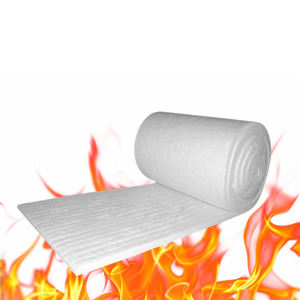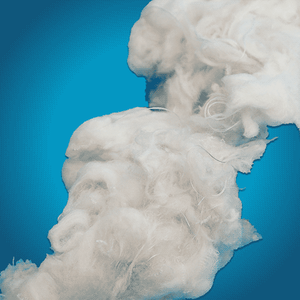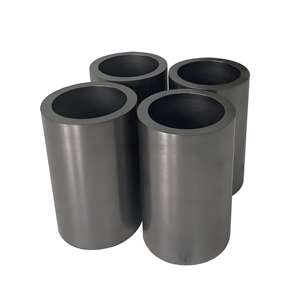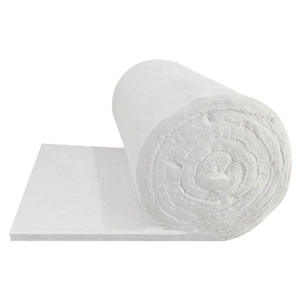Professional industry ceramic supplier, silicon nitride, silicon carbide, aluminum nitride and any other kinds of ceramics.
PRODUCT PARAMETERS
Description
Overview of B-grade ceramic fiber with high-temperature resistance (1650°C), fast thermal conductivity, excellent crack resistance, and excellent oxidation resistance
B-grade ceramic fiber with high-temperature resistance (1650°C), fast thermal conductivity, excellent crack resistance, and excellent oxidation resistance is a lightweight, high-temperature insulation material composed primarily of alumina-silica. It is manufactured through a melting and spinning or blowing process, resulting in a flexible, wool-like textile. This material is engineered to provide exceptional thermal management, conserving energy and protecting equipment in extreme temperature environments across various industries.
Features of B-grade ceramic fiber with high-temperature resistance (1650°C), fast thermal conductivity, excellent crack resistance, and excellent oxidation resistance
-
Excellent Thermal Stability: Withstands continuous operating temperatures up to 1260°C (2300°F) and higher for certain grades, with minimal shrinkage.
-
Low Thermal Conductivity: Provides highly efficient insulation, reducing heat loss and improving energy efficiency.
-
Lightweight & Low Heat Storage: Offers low thermal mass, enabling rapid heat-up and cool-down cycles for improved process control and energy savings.
-
Thermal Shock Resistance: Highly resistant to damage from rapid temperature changes.
-
Excellent Flexibility & Resilience: Can be fabricated into blankets, boards, papers, and textiles to fit complex shapes and applications.
-
Good Chemical Stability: Resists attack from most corrosive agents, except strong alkalis and hydrofluoric acid.
Specification of B-grade ceramic fiber with high-temperature resistance (1650°C), fast thermal conductivity, excellent crack resistance, and excellent oxidation resistance
B-grade ceramic fiber handles intense heat. It withstands temperatures up to 1650°C. This makes it very useful for high-heat jobs. It keeps its shape and strength even at these extremes. Many materials fail under such conditions. This fiber does not.
It moves heat quickly. This fast thermal conductivity is important. Applications needing rapid heat transfer benefit. Think lining furnaces or kilns. Heat moves efficiently through the material. This helps processes work better. It saves energy too.
The fiber resists cracking very well. Thermal cycling is no problem. Heating up and cooling down repeatedly won’t damage it. Brittle materials often crack under stress. This fiber stays tough. Its structure holds together over time. This means longer service life.
Oxidation resistance is another key strength. Exposure to air at high temperatures doesn’t harm it. Many materials degrade when hot and exposed to oxygen. This fiber stays stable. It doesn’t break down easily. This ensures reliable performance over its lifespan.
These properties work together. High-temperature stability is the foundation. Fast thermal conductivity manages the heat flow. Excellent crack resistance handles physical stress. Oxidation resistance fights chemical breakdown. The result is a highly durable insulation material.
You find this fiber in demanding places. Industrial furnaces use it for linings. Kilns in ceramics and metals rely on it. High-temperature pipe insulation often uses it. Fire protection systems benefit from its heat resistance. Anywhere extreme heat is a factor, this fiber performs. It offers a practical solution for thermal management. Reliability under stress is its hallmark.
Applications of B-grade ceramic fiber with high-temperature resistance (1650°C), fast thermal conductivity, excellent crack resistance, and excellent oxidation resistance
B-grade ceramic fiber handles extreme heat exceptionally well. It withstands temperatures reaching 1650°C without breaking down. This makes it perfect for tough industrial jobs. Furnace linings use this material extensively. Kilns benefit greatly from its heat tolerance. High-temperature pipes need reliable insulation. This fiber provides that essential barrier.
Heat moves through this material slowly. It doesn’t pass heat easily. This quality is crucial for saving energy. Less heat escapes from furnaces and ovens. Equipment stays hotter inside. Fuel costs go down. Workers near hot equipment stay safer too.
This fiber resists cracking under stress. Thermal cycling happens constantly in hot environments. Materials heat up. They cool down. This causes expansion and contraction. Many materials crack over time. B-grade ceramic fiber handles this well. It stays intact longer. Maintenance becomes less frequent. Equipment downtime reduces significantly. It’s a durable solution.
Oxidation poses a big problem at high temperatures. Air exposure can damage many materials. This fiber resists oxidation effectively. It keeps its structure and strength. This ensures long-lasting performance. Metal processing relies on such dependable insulation. Foundries use it around molten metal. Heat treatment facilities depend on it. Chemical plants need materials that won’t degrade.
Industrial gaskets and seals face extreme conditions. This fiber works well here. Fireproofing needs materials that won’t burn or melt. This ceramic fiber meets that need. Backup insulation adds extra safety layers. It’s a versatile material solving many heat problems. Factories appreciate its reliability. It helps equipment run smoothly and efficiently.
Company Profile
Tanki New Materials Co.Ltd. focus on the research and development, production and sales of ceramic products, serving the electronics, ceramics, chemical and other industries. Since its establishment in 2015, the company has been committed to providing customers with the best products and services, and has become a leader in the industry through continuous technological innovation and strict quality management.
Our products includes but not limited to Aerogel, Aluminum Nitride, Aluminum Oxide, Boron Carbide, Boron Nitride, Ceramic Crucible, Ceramic Fiber, Quartz Product, Refractory Material, Silicon Carbide, Silicon Nitride, ect. please feel free to contact us.

Payment Methods
T/T, Western Union, Paypal, Credit Card etc.
Shipment Methods
By air, by sea, by express, as customers request.
5 FAQs of B-grade ceramic fiber with high-temperature resistance (1650°C), fast thermal conductivity, excellent crack resistance, and excellent oxidation resistance
Here are 5 common questions about our B-grade ceramic fiber insulation:
What exactly is B-grade ceramic fiber?
It’s a high-performance insulation material made from special alumina-silica. It looks like a flexible blanket or board. Its main job is blocking intense heat in industrial settings.
How hot can it really handle?
This fiber withstands temperatures up to 1650°C continuously. That’s extremely hot. It keeps its shape and insulating power at these levels. It’s built for demanding furnace and kiln use.
Why is crack resistance important?
Heating and cooling equipment causes stress. Materials crack under this stress. Our fiber resists cracking exceptionally well. This means it lasts longer. You get reliable insulation over many cycles.
What about oxidation resistance?
Exposure to hot air degrades some materials. Our fiber resists oxidation strongly. It doesn’t break down easily in high-heat air environments. This contributes to its long service life.
Does it conduct heat well?
No. Its key feature is moving heat slowly. It has low thermal conductivity. This means it traps heat effectively. Your equipment stays hotter inside. Less energy escapes. You save power.
REQUEST A QUOTE
RELATED PRODUCTS

Ceramic Fiber Sheet for Effective Thermal Insulation.

Ceramic fiber blankets for 1260°C, 1400°C, and 1600°C. of various specifications for insulation fiber blankets.

Low-temperature ceramic fiber gaskets.

Excellent thermal stability, bulk ceramic fiber wool for filling complex spaces.

2018 product kiln ceramic fiber board



